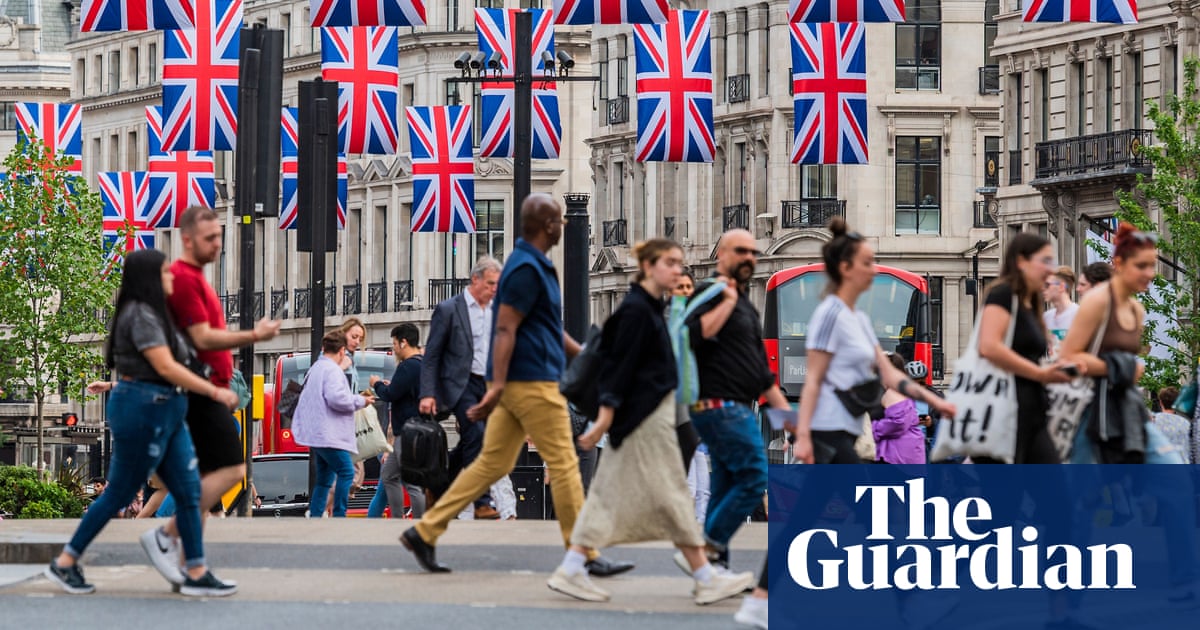The UK is officially out of recession after figures showed the economy grew by 0.6% in the first three months of the year.
The Office for National Statistics (ONS) said the period from January to the end of March marked a return to growth after a mild recession in the second half of 2023. It was the strongest rate of quarterly growth since the end of 2021, and a better performance than expected by economists, who forecast growth of 0.4% in the first quarter.
The downturn came to an end after an increase in activity across the services sector, which has flourished since the turn of the year as wages have outstripped inflation, easing pressure on consumers.
However, forecasters expect the UK to grow slowly this year as high interest rates and last year’s inflation surge continue to take their toll on disposable incomes.
The Bank of England has predicted that a lack of momentum in the economy means gross domestic product (GDP) will grow by only 0.5% this year. The Bank kept interest rates unchanged at 5.25% on Thursday but indicated it may begin cutting them from June.
The chancellor, Jeremy Hunt, said: “There is no doubt it has been a difficult few years, but today’s growth figures are proof that the economy is returning to full health for the first time since the pandemic.”
Speaking after a trip with Hunt to a Siemens factory near Oxford, Rishi Sunak said it would take time for people to “really feel better”.
“Of course there’s more work to do,” said the prime minister. “And I get that. And that’s why I’m keen to stick to our plan and keep delivering for people. But I think today’s figures show that we now have momentum.”
Hunt said the UK had the best outlook among European G7 countries over the next six years, “with wages growing faster than inflation, energy prices falling and tax cuts worth £900 to the average worker hitting bank accounts”. However, apart from Germany, other eurozone countries avoided a recession last year.
The Organisation for Economic Co-operation and Development said last week that the UK would be the worst performing economy in the G7 next year, as high interest rates and the lingering effects of last year’s surge in inflation drag on growth.
Responding to the first-quarter GDP numbers, the shadow chancellor, Rachel Reeves, said it was a case of going “from no growth to low growth”.
She said: “This is no time for Conservative ministers to be doing a victory lap and telling the British people that they have never had it so good. The economy is still £300 smaller per person than when Rishi Sunak became prime minister.”
The ONS said consumer spending and business investment recovered in the first quarter after declines across the second half of 2023.
after newsletter promotion
An increase in transport and storage services was the biggest driver of the 0.7% increase in the services sector. The boom in private healthcare and renewed activity in the NHS after a series of strikes last year were among the other factors pushing up services sector growth.
Construction activity fell in response to a decline in housebuilding, while the manufacturing sector benefited from a recovery in car production.
Textile factory output fell by 3.6% to register the sixth consecutive quarter fall.
Energy production increased between January and March. However, the ONS said growth in this sector and manufacturing was partly offset by a fall of 2.4% in the output of activities associated with the big water companies, including sewage and waste management.
Ruth Gregory, an economist at the consultancy Capital Economics, said the increase in GDP showed the economy had been recovering from last year’s contraction with more strength and momentum than was previously understood. But she doubted the increase in GDP would prevent the Bank of England from making its first interest rate cut in the summer.
“At this stage we doubt the recovery will be strong enough to prevent inflation from falling further and the Bank from cutting rates to 3% next year,” she said.
GDP per head is estimated to have increased by 0.4% in the first quarter of 2024, after seven consecutive quarters without positive growth. It is estimated, based on ONS projections of the UK’s rising population, that GDP per head is 0.7% lower compared with the same quarter a year ago.


